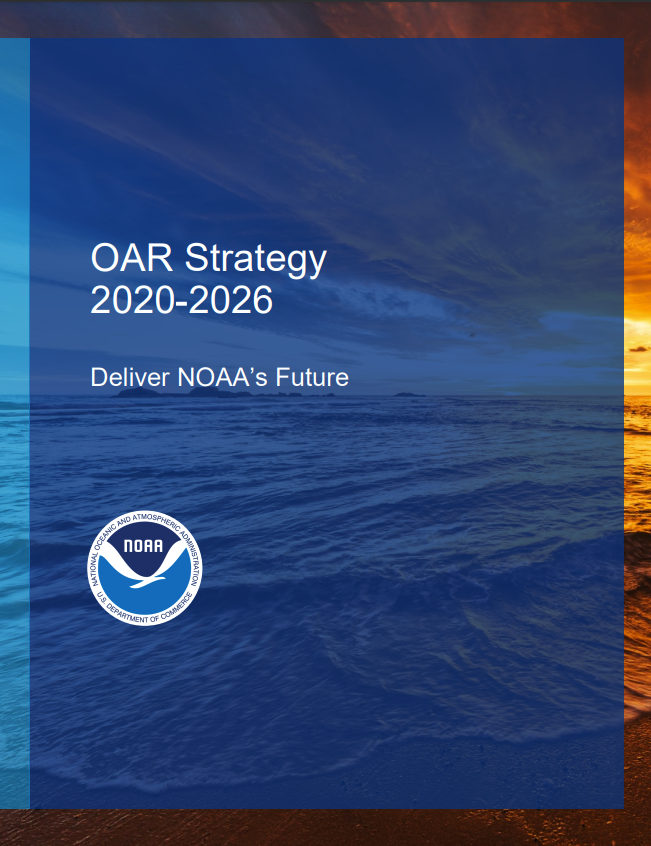2020-2026 Oceanic & Atmospheric Research Strategy
OAR has been on a journey to transform in order to be successful in the future, to effectively deliver NOAA’s future and be competitive in the environmental R&D market.
To that end, NOAA Research has developed the 2020-2026 OAR Strategy to help further OAR as a leader in environmental research and assist us in meeting our vision to deliver NOAA’s future.
The research landscape of tomorrow will be different from that of today. There will likely be additional contributors to the sciences OAR studies, including more involvement from the private sector, increased philanthropic participation, and greater academic integration. There will always be a unique role for long-term research exclusively dedicated to NOAA’s diverse missions, and that remains OAR’s sole job.
Four Goals to Deliver NOAA's Future
Our goals reflect what OAR desires to achieve, where to focus activities, and ultimately, how to improve OAR’s ability to deliver NOAA’s future.
Explore the Marine Environment
Detect Changes in the
Ocean & Atmosphere
Make Forecasts Better
Drive Innovative Science
Supporting the NOAA Mission By:
Exploring the Marine Environment Detecting Oceanic & Atmospheric Changes Making Forecasts Better Driving Innovative Science
The OAR Strategy lays the foundation for our future and outlines OAR’s vision, mission, and values along with a strategic approach to begin addressing the changing operating landscape and the factors influencing the environmental science community today and in the future.
Objectives, nested under each goal, are the areas of focus needed to help OAR achieve its goals.
Download the OAR Strategy (PDF link download the reader here)
Please direct questions on the OAR Strategy to our office.
External Affairs Sub Menu
Student Opportunities
Finding opportunities for students to join OAR is critical to our success as we build the future of our organization.
Budget
We receive many questions about the timing of the budget process. The timeline is intended as a guide to help explain the process from budget formulation to execution.
OAR Strategy
NOAA Research has updated its Strategic Plan to create a framework aligned with the NOAA 5-year Research & Development Plan released last year.
UN Decade
This “Ocean Decade” focuses the world’s attention on the science and partnerships we need to make the future of the ocean healthy, productive, and sustainable for the benefit of society.
